Golden Cross Trading Strategy – Can it really give Golden Win Rate after backtesting 100 TIMES?
Does the famous Golden Cross Trading Strategy work better than the other strategies we have tested so far? You might have noticed that some News Channels like to talk a lot about this Strategy when a stock gives a golden crossover. In this video, I have tested the Golden Cross one hundred times, to see if the Golden Cross Trading Strategy actually works, and if not, what are the disadvantages you will have while using this strategy.
This is the 19th strategy we have tested 100 times in the strategies tested 100 times series. If you are watching this channel for the first time, check out other videos on the channel where we tested different strategies to see if they work or not. Also subscribe to the Trading Rush Channel, because it’s free, and you don’t want to risk your own money on Trading Setups that does not even work.
The idea of the Golden Cross is really simple. Just smooth out the price using two moving averages and buy at the crossover of the moving averages. In a Golden Cross Strategy, a 200 period moving average and a 50 period moving average is used. Here, the 50 moving average is the fast moving average, and 200 is the slow moving average. Usually, these moving averages are simple moving averages, and I have used the same while backtesting it 100 times.
The Golden Cross Trading Strategy goes something like this. When the 50 period moving average, crosses above the 200 period moving average, it’s a long entry signal. Similarly, when the 50 period moving average crosses below the 200 period moving average, it’s a short entry signal.
Now the Golden Cross strategy is more of a buy and hold kind of strategy. It is mostly used on the higher timeframes to hold a stock or forex pair for a long period of time.
Unlike other indicators we have seen on the Trading Rush channel, the Golden Cross Strategy doesn’t tell you where to put the stoploss. But most people like to set the stoploss just below the 200 period moving average. Furthermore, many traders like to trail the stoploss with the 200 period SMA to catch the big move. But as you already know, market is in a range most of the time, so many traders rarely book a very big profit.
Obviously, you can’t take every buy signal given by the golden Cross Trading Strategy, because it will give a lot of false entry signals in a range market. To filter those false signals however, you can modify the strategy and only buy, when the candle is completely above the 200 period moving average when the crossover happens. Similarly, only sell, when the candle is completely below the 200 period moving average when the crossover happens.
So here’s the complete modified Golden Cross Strategy. If the 50 period SMA crosses above the 200 SMA, and if the cross over candle is above the 200 SMA, it’s a buy signal. Stoploss goes below the 200 SMA line.
Similarly, if the 50 SMA crosses below the 200 SMA, and if the crossover candle is below the 200 SMA, it’s a sell signal. The stoploss goes above the 200 SMA line. If you want to trail the stoploss, you can simply trail it above the 200 SMA as it goes down. Some traders also like to exit the position at the next crossover. For example, if you buy when the 50 SMA crosses above the 200 SMA, your exit signal will be when the 50 SMA crosses below the 200 SMA. Similar thing applies to the short setup, just opposite.
Since we tested other strategies 100 times with a fixed reward to risk ratio, and to compare this data with the data we got from other strategies, I have tested the Golden Cross Strategy with fixed reward to risk ratio as well.
So after testing it one hundred times, here’s what happened.
Number 1. Since the Golden Cross uses simple moving averages to find the entry signal, and since moving averages are lagging indicators, the entry signals were lagging too. That’s obvious, but because of the late entry, the stoploss was sometimes way too far which led to a bad reward to risk ratio.
Far away stoploss is not really a problem if the price makes a big move in your favor. But as you already know, most of the time price is moving sideways. So the probability of trade making a big profit consistently is really low, unless there is some other catalyst that is moving the market strongly in one direction.
Number 2. Since we modified the Golden Cross to filter false signals, the losing trades were successfully avoided. But the performance was not that good when compared to other strategies we have seen on this channel. Even if you don’t use a stoploss, and only exit when the Golden Cross gives an opposite crossover, you are probably not going to be way more profitable than the fixed profit setup. During this backtest, there were two trades that had more than 10 times profit potential. But then there were many trades that had 3 times more loss potential than the fixed stoploss. So even if you had booked the 10 times profit in 2 trades, the multiple trades with 3 times more loss would have brought your average down.
You should probably use some other indicators to confirm entry signals, instead of using the Golden Cross alone. Since money management is one of the key in trading, it is a good idea to use a proper stoploss and a favorable reward to risk ratio.
So after testing the Golden Cross Trading Strategy, I got the win rate of approximately 42 percent with the reward to risk ratio of 1.5 to 1. And since this is an approximate win rate, we can safely say that the Golden Cross Trading Strategy, is a hit or miss strategy, just like the aroon strategy. In other words, this strategy on its own doesn’t have a very high probability of making big profits consistently. I had 5 winners and 5 losing trades in a row. I started with an account balance of 10000, and after 100 trades, it was only up by 500. Compared to other strategies we have seen so far on this channel, this is not the best. Furthermore, the Golden cross strategy took the longest time to complete 100 trades. In most videos in the strategies tested 100 times series, I have tested the strategies on the same pair which is Euro JPY. But for this strategy, I had to switch to 3 different pairs to take 100 trades. That’s because I ran out of data on 2 forex pairs. This means, that the golden cross strategy is not only a hit or miss strategy, but it also takes a lot of time to make profit. Most indicators we have tested so far, were able to make a lot more profit than this in a shorter amount of time.
The Golden Cross Strategy is a really old strategy. Since then, traders have created many different indicators that actually work, and we have tested many of them on the Trading Rush channel. You should test your strategy as well, and you can use the Official Trading Rush App to do that. It saves a lot of time by calculating win rate, profit graph, and other data in just one click. Download it from the Play Store, or using the link in the description.
That’s all. You now know more about the Golden Cross Strategy. Liked the video if you liked it. Subscribe and ring that notification bell so you don’t miss new videos, where we test more strategies 100 times to find their win rates. After all, you don’t want to trade using an indicator that only gives your money to your broker, and not vice versa. Thanks a lot for watching!

